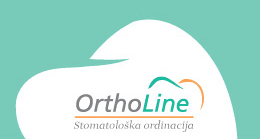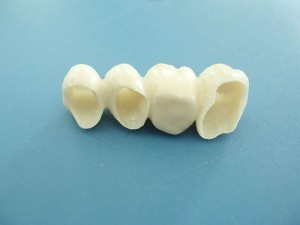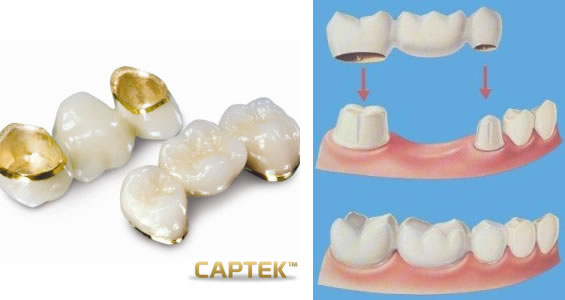Fixed prosthesis means a rank of restorative solutions in dentistry. Crowns and bridges are the most frequent fixed solutions when sanation of one or more teeth is at stake. Fixed prostheses have at the same time the best quality for patients, both for their long life and the fact that they give patients the natural feeling. Crowns and bridges can be fixed to drilled teeth, screws that are fixed to natural tooth roots or tooth implants that are built in the jaw bone.
Ceramic crowns are the most frequent prosthetic type and we use them when natural teeth are extremely damaged and/or aesthetically unacceptable. They are put on natural drilled tooth or implant. Crown procedure takes a few days, and patient gets a temporary crown while waiting.
They can be metal ceramic, no metal zirconium ceramic, titanium ceramic and gold ceramic crowns.
Fixed prosthetics
Crowns are a type of tooth extension which after cementing fully covers the rest of the tooth. The dentist can recommend crown for various reasons some of which are:
- to recover full tooth shape
- to improve the tooth itself
- to perfect tooth looks
Metal ceramic crowns are made of metal as a base and porcelain that covers the metal construction. Such crowns have great resistance as well as natural looks, but there are certain disadvantages, too.
Metal ceramic crowns disadvantages:
- the looks of metal ceramic crowns is satisfactory, but not as satisfactory as that of no metal crowns
- ceramic part of the crown is breakable
- ceramic surfice can consume teeth in the opposite jaw
- metal part of the crown can sometimes be like a dark line on the eddges of gingiva
Although metal ceramic has been used most frequently so far, zirconium ceramic is recommended nowadays for the disadvantages stated.
Zirconium ceramic takes the leading place in today’s aesthetic dentistry. It is no metal ceramic for whose core instead of metal alloy zirconium dioxide is used, therefore this ceramic type is called zirconium oxide ceramic.
With its usage the aesthetic dentistry revolution started. Thanks to its extraordinary mechanical characteristics, that are better than all the other biomaterials, it is considered suitable for improvement of back dental regions (by which we have satisfying function with good looks), while with the impressive aesthetics, it is considered an ideal solution for frontal region.
All extensions with zirconium look completely natural. Zircon is ethereal which gives lighter and more natural looks. It is important to mention that zirconium ceramic is considered biocompatible after rigorous analyses to cytotoxicity, allergenicity, sensibility and malignity. It is expected that this kind of dental repairs will in close future fully replace metal ceramics that for its aesthetics do not fulfill today’s modern standards. The increasing usage of no metal zirconium ceramics opens the door for the CAD/CAM technology that announces bigger and bigger changes in making the perfect teeth, both aesthetically and functionally.
Gold ceramic for its biocompatibility and hardness is often used for covering premolars and molars with their strong chewing forces. These crowns are completely covered with ceramic.
Titan ceramic -an extremely light and high-quality material is used. It doesn’t cause any allergic reactions. Just like the previous types, this one is fully covered with ceramic, too.
Bridges– link broken tooth lines into one whole. The bridge frame make two or more crowns or built-in implants.
Inlay and Onlay-when the dental crown has a huge damage impossible to fix with filling and there is still enough healthy dental tissue, we use inlay and onlay ceramic extensions.
– when the dental crown has a huge damage impossible to fix with filling and there is still enough healthy dental tissue, we use inlay and onlay ceramic extensions
Bevels – Veneers
inlayfull_gold_inlay_onlay
interventions and saving as much healthy dental tissue as possible giving the best quality of prosthetic extension. In this respect, when possible the technique of bevels is used.
Bevels can be ceramic or composite, they are like thin plates of wishing shape and tooth color, and they are mostly put on front teeth.
Bevels are mostly used for:
- closing diastemas (gaps between teeth)
- repairing irregularly installed teeth in patients who are not interested in fixed orthodontic treatments
- tooth color changing
The advantage of this technique in comparison to ceramic crowns, when indicated, is far less preparation (0.5mm) and therefore less healthy dental tissue damage.



